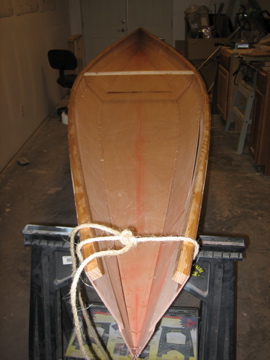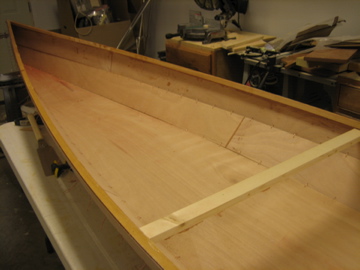It was suggested to use a Japanese saw to make all your cuts, never used one before but trusted their judgment. The beauty of the saw apparently is that you push to cut rather than pull as with a more traditional handsaw. This gives you incredible accuracy when cutting bevels, even for a hack like me. Once the bevels were cut, glue, screw and clamp up the joint to produce the bow.









